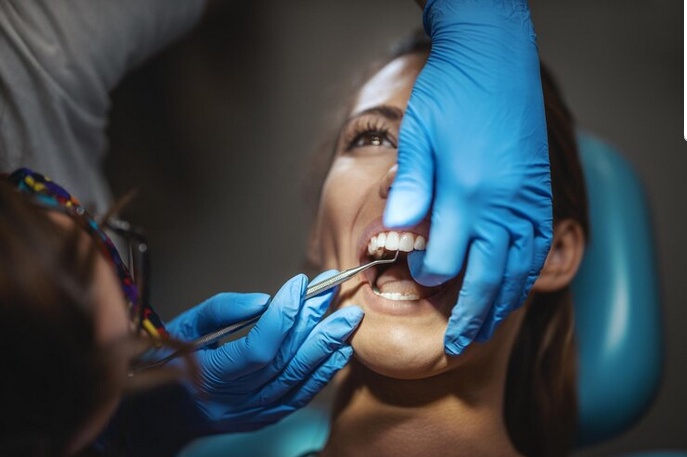Introduction:
Jaw surgery, medically known as orthognathic surgery, is a transformative procedure aimed at correcting abnormalities in the jaw structure, enhancing facial aesthetics, and improving overall oral health. Jaw Surgery West Hollywood has gained significant popularity as individuals seek to achieve harmonious facial proportions and address functional issues. This comprehensive guide delves into the intricacies of jaw surgery, exploring its indications, procedures, recovery process, and the transformative impact it has on patients' smiles and confidence.
Understanding Jaw Surgery:
Jaw surgery is a specialized procedure performed by maxillofacial surgeons to correct various conditions affecting the alignment and positioning of the jawbones. These conditions may include malocclusion (misalignment of teeth), skeletal discrepancies, congenital defects, facial trauma, or obstructive sleep apnea. By realigning the jaws, jaw surgery not only improves facial aesthetics but also enhances chewing function, speech clarity, and overall oral health.
Indications for Jaw Surgery: Several factors may indicate the need for jaw surgery:
- Malocclusion: Severe overbite, underbite, or crossbite that cannot be corrected with orthodontic treatment alone.
- Facial Asymmetry: Significant discrepancies in jaw size or positioning leading to facial imbalance.
- Obstructive Sleep Apnea: Jaw surgery can help alleviate breathing difficulties by enlarging the airway and improving airflow.
- TMJ Disorders: Temporomandibular joint (TMJ) disorders characterized by pain, clicking, or locking of the jaw may require surgical intervention.
- Traumatic Injuries: Fractures or injuries to the jawbone that affect its structure and function.
Pre-Surgical Evaluation: Before undergoing jaw surgery, patients undergo a comprehensive evaluation to assess their candidacy and plan the surgical approach. This evaluation typically includes:
- Clinical Examination: The surgeon examines the patient's facial structure, dental occlusion, and overall oral health.
- Imaging Studies: Advanced imaging techniques such as X-rays, CT scans, or 3D imaging help visualize the jawbones and assess the extent of deformities.
- Orthodontic Assessment: Collaboration with orthodontists is crucial to coordinate orthodontic treatment before and after surgery to optimize results.
Surgical Procedures:
Jaw surgery is performed under general anesthesia in a hospital setting and may involve one or more of the following procedures:
- Maxillary Osteotomy: Correction of upper jaw abnormalities, such as widening, narrowing, or repositioning to correct malocclusion or facial asymmetry.
- Mandibular Osteotomy: Realignment of the lower jaw to correct underbites, overbites, or asymmetry.
- Genioplasty: Reshaping of the chin to enhance facial harmony and balance.
- Orthognathic Surgery for Sleep Apnea: Surgical procedures aimed at enlarging the airway to alleviate obstructive sleep apnea.
Recovery and Rehabilitation: The recovery process following jaw surgery is crucial for optimal outcomes and may vary depending on the extent of the procedure. Key aspects of the recovery process include:
- Hospital Stay: Patients typically spend one to three days in the hospital following surgery for close monitoring and pain management.
- Pain Management: Medications are prescribed to manage pain and discomfort during the initial phase of recovery.
- Soft Diet: A soft or liquid diet is recommended for several weeks to facilitate healing and prevent damage to the surgical site.
- Orthodontic Adjustment: Orthodontic treatment continues post-surgery to fine-tune the bite and achieve optimal alignment.
- Physical Therapy: Some patients may benefit from physical therapy exercises to improve jaw mobility and function.
Transformative Impact: Beyond the physical changes, jaw surgery has a profound transformative impact on patients' lives:
- Enhanced Confidence: Improved facial aesthetics and smile symmetry boost self-esteem and confidence.
- Functional Improvements: Correction of malocclusion and jaw misalignment improves chewing function, speech clarity, and overall oral health.
- Alleviation of Symptoms: Patients experience relief from symptoms associated with TMJ disorders, sleep apnea, and facial pain.
- Long-Term Benefits: Properly aligned jaws contribute to better long-term dental health and reduce the risk of dental problems.
Conclusion:
Jaw surgery is a transformative procedure that goes beyond cosmetic enhancement, addressing functional issues and improving overall quality of life for patients in West Hollywood and beyond. By understanding the indications, procedures, and recovery process associated with jaw surgery, individuals can make informed decisions about pursuing treatment to achieve a harmonious smile and optimal oral health. With advancements in surgical techniques and interdisciplinary collaboration between surgeons and orthodontists, jaw surgery continues to provide life-changing results for patients seeking to transform their smiles and regain confidence in their appearance.
This comprehensive guide serves as a valuable resource for individuals considering jaw surgery, offering insights into the transformative potential of this specialized procedure in West Hollywood and the broader context of facial aesthetics and oral health. Through a combination of surgical expertise, personalized treatment plans, and dedicated post-operative care, jaw surgery empowers patients to embrace their smiles and live life to the fullest with renewed confidence and well-being.


No comments yet